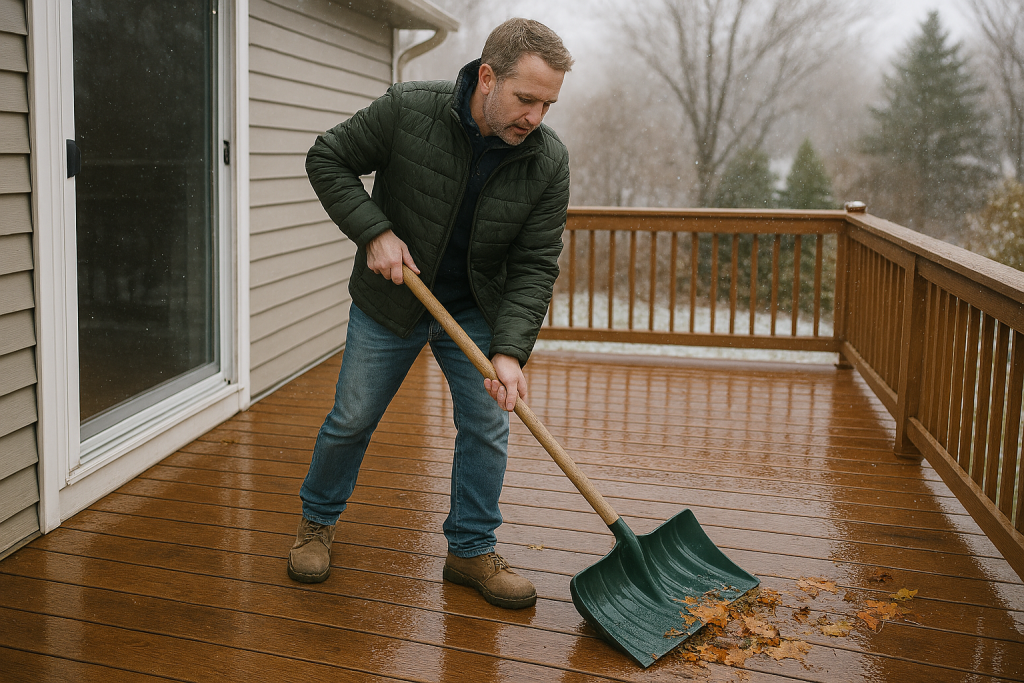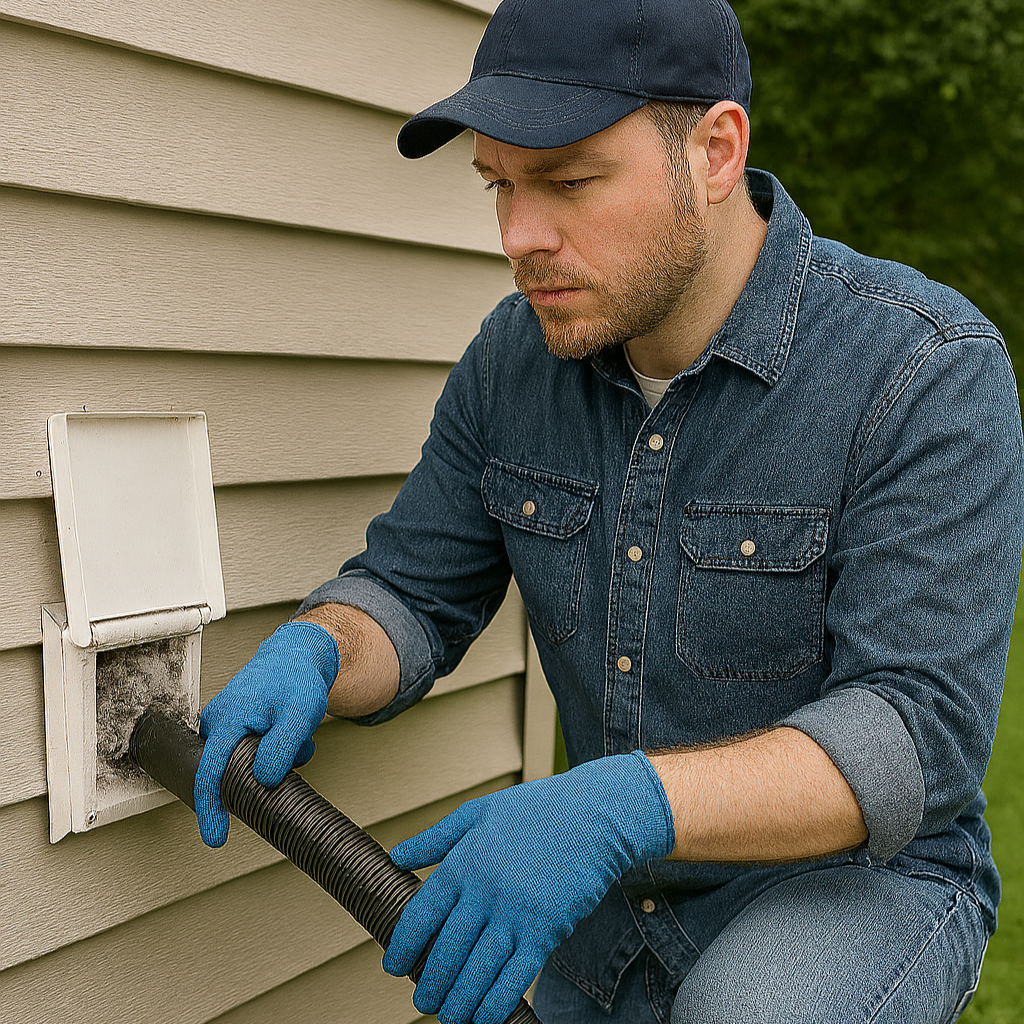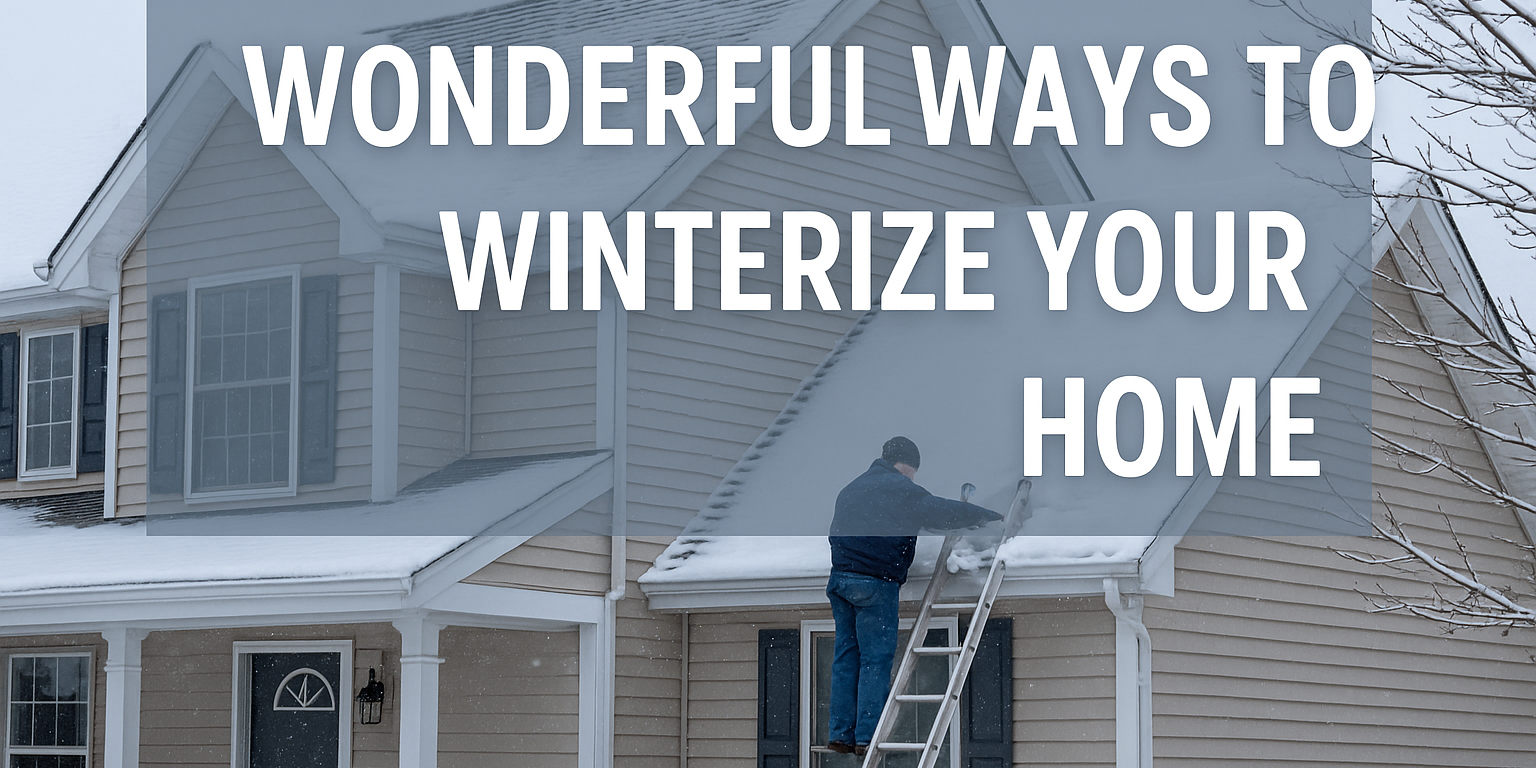Preparing your home for winter is an essential part of protecting your investment and ensuring your family stays comfortable. Cold temperatures, snow, ice, and freeze-thaw cycles can take a toll on your roof, siding, gutters, windows, doors, and outdoor structures. The steps below provide a comprehensive guide to winterizing your home’s exterior before harsh weather begins.
1. Roof
Your roof is your home’s first and most important shield against winter weather. When snow, ice, and freezing rain start to pile up, a well-prepared roof keeps the cold out and the warmth in. Taking time to get it ready now can help prevent ice dams, leaks, shingle damage, and even premature wear that shortens your roof’s lifespan.

- Inspect Shingles and Flashing
- Look for missing, loose, or damaged shingles. Ensure that flashing is secure around chimneys, skylights, and valleys. Any gaps may allow water intrusion when snow begins to melt.
- Clear Debris
- Remove leaves, branches, and dirt that may trap moisture. Excess debris can also lead to ice damming and rot.
- Verify Proper Ventilation
- Adequate attic ventilation reduces moisture buildup and keeps roof temperatures balanced, which helps prevent ice dams.
- Consider a Professional Inspection
- A trained roofing professional can identify issues that are not visible from the ground.
2. Gutters and Downspouts
If your gutters aren’t working properly, melting snow and ice have nowhere to drain. Instead, the water can back up under your shingles, overflow near the foundation, or refreeze along the roofline, leading to costly water damage both inside and outside your home.
- Clean Gutters
- Remove leaves, twigs, and other debris. Clogged gutters cause overflow that may freeze along the roof edge.
- Check Downspouts
- Ensure downspouts are directing water away from the home foundation. Consider adding extensions if necessary.
- Inspect for Sagging or Damage
- Loose or sagging sections should be repaired or resecured.

3. Siding
Your siding acts as a protective barrier against moisture, wind, and freezing temperatures. During the winter months, harsh weather can worsen small cracks, gaps, or loose panels, allowing cold air and moisture to seep in and cause bigger problems over time.

- Inspect for Cracks or Loose Panels
- Small openings can allow cold air and moisture inside the home structure.
- Clean the Surface
- Dirt and organic buildup can cause staining and deterioration over winter.
- Seal Gaps Around Openings
- Use exterior caulking around windows, outlets, and trim where gaps are visible.
4. Windows and Doors
Well-sealed windows and doors keep the warm air in and the cold drafts out, making your home more comfortable and energy-efficient. When gaps or worn seals are repaired, your heating system doesn’t have to work as hard, which can lead to noticeably lower energy bills throughout the winter.
- Check Weatherstripping
- Replace weatherstripping that is cracked or missing. Pay attention to drafty areas.
- Inspect Caulking
- Reapply caulking around window and door frames where separation or cracking is present.
- Consider Storm Windows or Door Sweeps
- These additions help block cold air and reduce heat loss.

5. Decking and Outdoor Structures
Snow, ice, and lingering moisture can slowly wear down wood surfaces, leading to rot, warping, and other forms of damage that weaken your deck or porch over time. Taking a few preventive steps before winter hits can help protect your outdoor spaces and keep them looking great year after year.

- Clean and Seal Deck Surfaces
- Applying a sealant provides a protective layer against moisture.
- Check Railings and Steps
- Loose or wobbly sections should be reinforced to prevent accidents in icy conditions.
- Store Outdoor Furniture
- Storing or covering outdoor furniture reduces wear and tear during the winter season.
6. Exterior Water Systems
When temperatures drop, any remaining water in outdoor lines can freeze, expand, and burst, causing leaks, flooding, and costly repairs. Taking time to drain and shut off exterior water sources before the first freeze can save you from major headaches and unexpected expenses later in the season.
- Shut Off Outdoor Water Lines
- Drain hoses and shut off outdoor spigots to prevent freezing.
- Winterize Irrigation Systems
- Have irrigation lines flushed and shut down properly.

7. Chimneys and Vents
Keeping proper airflow throughout your home is essential for helping your heating system work efficiently and safely. When vents and chimneys are clear, warm air circulates better, energy use stays lower, and there’s less risk of dangerous buildup from blocked exhausts.

- Clear Chimney Obstructions
- Have chimneys cleaned and inspected annually.
- Check Exhaust Vents
- Make sure dryer and furnace exhaust vents are free of debris.
Ready Your Home for Winter
Preparing your home’s exterior for winter isn’t just about comfort—it’s about protecting your biggest investment. A little attention now can prevent leaks, damage, and costly repairs once freezing temperatures set in.
If you’d like a professional inspection or need help getting your roof, siding, gutters, or windows winter-ready, Grand Rising Exteriors is here to help keep your home safe, warm, and worry-free all season long. 💜










